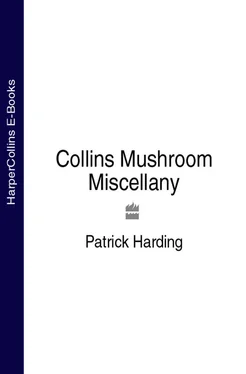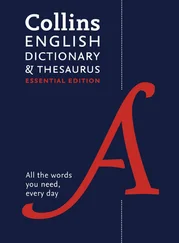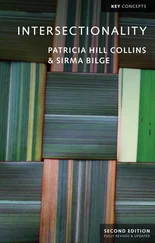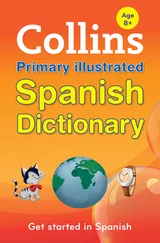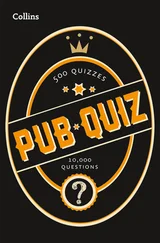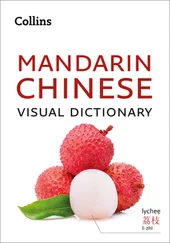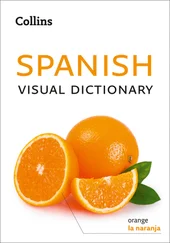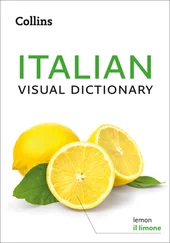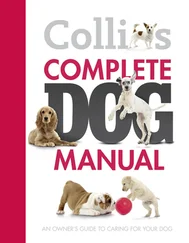I’d rather lie on a sofa than sweep beneath it .
Life is too short to stuff a mushroom .
At the time the only widely available picture book aimed at the interested amateur, with the exception of The Observer’s book, was Lange and Hora’s Collins Guide to Mushrooms and Toadstools . As a young naturalist I ‘bagged’ my first 100 species with the help of Lange and Hora, but the quality of the pictures left much to be desired and no English names were included.
In 1981 Roger Phillips paved the way for the interested amateur mycologist with a user-friendly book (recently updated) adorned with excellent photographs and lightened by the inclusion of some English names. By 1986 Britain was almost ready for How to Identify Edible Mushrooms , which I wrote with my great friend Tony Lyon. The book is still in print and has been joined by a plethora of others (including Need to Know? Mushroom Hunting , published in 2006) on the subject of edible fungi.
For many years local natural history societies paid lip service to fungi with just a single annual foray, but following the upsurge of interest in mycology many groups now have a separate fungal section. In addition, since the 1990s many local fungal recording groups have been formed (see here for details) while journals such as Field Mycology and British Wildlife keep mycologists up to date with new developments. An interest in fungi is no longer considered unusual; penny buns have become accepted.
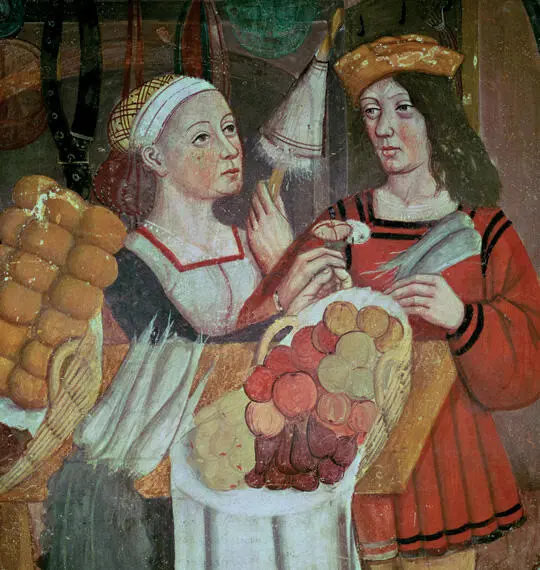
The Vegetable Market: detail from 15th Century Italian fresco
( Giraudon/BAL )
The Grete Herbal , written in 1526, had this to say about what it called ‘mussherons’:
There be two manners of them, one manner is deedly and sleath them that eateth of them and be called tode stoles .
Given that the other ‘manners’ were the edible ones, it is interesting to note that this indicates that the group of organisms termed mussherons (mushrooms) included the poisonous tode stoles (toadstools). Over the following 400 years the word mushroom came to be restricted to edible species, separate from the inedible toadstools, although it was realised that not all of the latter were poisonous. The title of Edward Step’s early 20th century book Toadstools and Mushrooms of the Countryside is indicative of the use of the two terms at a time when the common names of edible, if unrelated, species included field mushroom, parasol mushroom and oyster mushroom.
The meaning of the two terms continued in this way until the end of the 20th century, as evident in Gem Mushrooms and Toadstools (1996). As the British public became more interested in fungi and in gathering edible ones, so a subtle change occurred. The second edition of the Gem book appeared under the simpler title of Mushrooms , as did an updated version of a book by Roger Phillips previously entitled Mushrooms and Other Fungi of Great Britain and Europe . After almost 500 years the word mushroom has once again become an all-embracing term for the macrofungi (those that produce fruitbodies that can easily be seen with the naked eye); a group that includes the toadstools.
Scientists also lumped mushrooms and toadstools together, in a group known as the Agaricales . The ‘agarics’, as they became known, include all species with a fleshy, umbrella-shaped fruitbody as typified by fly agaric ( Amanita muscaria ), the infamous red and white toadstool. As knowledge of fungi developed, the agarics were separated into a large number of different genera, each containing closely related species. Professional mycologists reserve the word mushroom for members of the genus Agaricus , which have free gills (not attached to the stem), a ring on the stem and dark-brown spores shed from pink gills. The genus includes cultivated mushroom ( Agaricus bisporus ), field mushroom ( Agaricus campestris ) and yellow-staining mushroom ( Agaricus xanthodermus ). Unfortunately, not all members of the genus are safe to eat; Agaricus xanthodermus is mildly poisonous. One result of this is the enigma of a poisonous ‘mushroom’, one reason why the recent list of recommended English names (see here) drops the mushroom name in favour of yellow stainer.
If the terms mushroom and toadstool are confusingly interchangeable, the presumed etymology of the two words is equally complex. Several 19th century authors assumed that the word mushroom evolved from mussheron, which came from a French word, mouscheron . This was believed to be a derivation of mouche-eron , from an old French name for fly agaric ( Amanita muscaria ), which is most people’s idea of a toadstool rather than a mushroom. Other writers have attempted to make a link with the French word mousseron , still used in reference to certain edible fungi, and the word mousse , meaning moss; a habitat often frequented by edible fungi. Mousse also means foam or froth (hence the dessert of the same name) and this ties in with the early belief (recorded by Pliny) that fungi developed from a ‘kind of glutinous fome or froth’. Sponges were thought to originate in a similar way and this association may be at the root of the word ‘fungus’, coming from the Greek sphonggis , a sponge.
Mushrooms were long believed to be formed from mud or the slime left by snails. This has raised the possibility that the term mushroom originated from the Greek word μυκηζ, giving us the Latin mucus , the likely origin of the term mycology, the scientific study of fungi. The word mycology was first used by the Reverend Berkeley in 1836, but it was some time before it replaced the earlier term fungology.
In 1953 John Ramsbottom dared to argue that the derivation of the word toadstool was self-evident:
A typical toadstool obviously might serve as a resting place for a sedentary bachtrian .
His words were backed by a sequence of black and white photographs from The Times . These appeared to show a toad climbing on to a toadstool, although the images were later found to have been faked.
While it is unlikely that the average toad spends much of its time sitting on a toadstool (but see here) there is a long history associating toads (and frogs) with fungi. The link is also found in names used throughout Europe and also in Africa, America and Japan. The earliest British reference is the word tadstole (1398), followed
by toodys hatte in the 15th century. The link is also clear in the use of the old word paddock, meaning a frog or toad, in the term paddockstool . That it was toads rather than frogs that lent their name is probably due to the venomous nature of the former. Like fungi, frogs and toads were associated with mud and slime, but frogs lacked the venomous nature attributed to toads and many species of fungi.
The most poisonous European fungi are found in the genus Amanita (see here). Here the fruitbody emerges through a sheet-like veil, the remains of which may be left as raised, wart-like spots on the surface of the cap. Some authors have argued that Amanita muscaria (fly agaric) is the archetypal toadstool. An earlier English name for it was wart caps; another possible link with the warty-backed toad. In 1953 a related species, Amanita citrina (false deathcap), was shown to contain bufotenine, a chemical first isolated from the toxic skin gland secretions of toads. Sadly for those seeking a common link behind the use of both toads and fly agarics for their hallucinogenic effects (see here), bufotenine does not occur in fly agaric. In addition, although bufotenine is structurally similar to psilocybin (see here), it is not the chemical responsible for the effects of toad’s skin gland secretions.
Читать дальше
